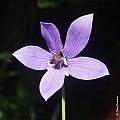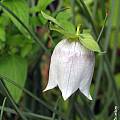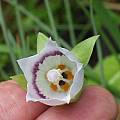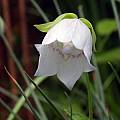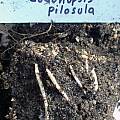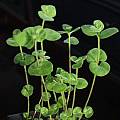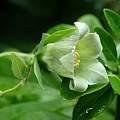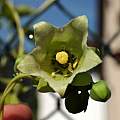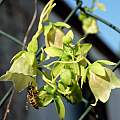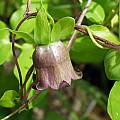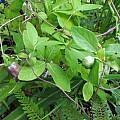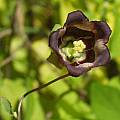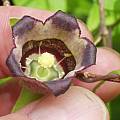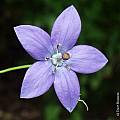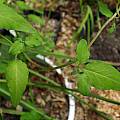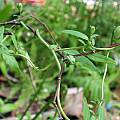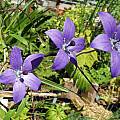The 30 to 40 species of the genus Codonopsis belong to the Campanulaceae family, and are found in the mountains of Central Asia, Korea and Japan. They are perennial herbs that arise each spring from a thick tuber (resembling an icicle radish) or fusiform roots. Some species have long thin stems that often twine through low shrubs or over rocks, where the beauty of the interior patterns of the flowers can be better seen. Other species form low, sprawling shrubs, or climb weakly by simply draping themselves over branches. The flowers vary from star shaped to bell shaped, their colors ranging from white, cream, light greens, light to dark blues, maroons and black, often with a combination of these colors. They seem to prefer partial or mottled shade, but will take full sun if their roots remain cool. A number of species are moderately hardy, but all require a well drained soil. Where winters are wet, a sheltered position with a dry mulch is recommended. They are easy from seed, but the tubers need several years to reach flowering size.
An interesting feature of at least some of the codonopsis is the mechanism of prevention of self-pollination by individual flowers. The anthers initially clasp and spread pollen on the outside of the stigma (the ball part) ready to be picked up by pollinators (see Codonopsis vinciflora). After a couple days, the stamens wither, and the stigma opens into three lobes, exposing the receptive surfaces (see Codonopsis forrestii).
Codonopsis Plants, website of the UK National Collection is a useful reference.
Text by Dave Brastow.
Codonopsis forrestii Diels is a tall twining type, growing up to 3 m. The leaves are 5-7 cm, elliptical and glabrous, with a 1 cm petiole. The flowers are star shaped, bright blue and about 5 cm in diameter. The stamens have short filaments, placing the anthers at the base of the stigma. Photo by Dave Brastow.
Codonopsis pilosula Nannfeldt grows to 1.7 m. The picture of the tubers is of two year old seedlings after they've gone dormant. Note the top of the tuber has developed about 1 cm below the soil surface. The leaves are small, 2 cm, light green, cordate and somewhat hairy. The flowers that were expected should be campanulate, 2.5 cm and green flushed with subdued purple. What we actually got, while campanulate, was somewhat different in both color and patterning, leaving the identification in doubt- possibly Codonopsis clematidea. Photos by Dave Brastow.
A plant grown by Martin Bohnet fits the original description, so this is more likely a true C. pilosula:
Codonopsis ussuriensis Hemsley is a twining species, with 10 cm long, elliptical, glabrous leaves. The flowers are 2 cm long, campanulate with strongly reflexed petal tips. Height: to about 3 m. Photos by Dave Brastow.
Codonopsis vinciflora Komarov is a species with very thin stems, and small, thin, toothed leaves without hairs. The 3-4 cm flowers are terminal or on lateral branches near the apex. The blue color is very pure and dense. Height: to about 6 ft. Photos by Dave Brastow.
